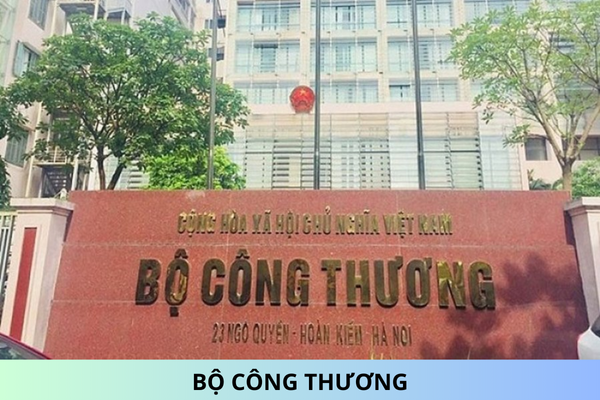Which Province Has the Most Cities in the Country? How Are Administrative Units Classified?
Which province has the most cities in the country?
At Clause 2, Article 1 of Resolution 1012/ND/UBTVQH15 in 2024 on the establishment of Ben Cat city, Binh Duong province, it is decided as follows:
Establishing An Dien ward, An Tay ward under Ben Cat district-level town and establishing Ben Cat city, Binh Duong province
- Establishing An Dien ward, An Tay ward under Ben Cat district-level town:
a) Establishing An Dien ward on the basis of the entire natural area of 31.22 km² and the population of 25,363 people in An Dien commune.
An Dien ward borders on An Tay ward, My Phuoc ward, Thoi Hoa ward, Phu An commune, Bau Bang district, and Dau Tieng district;
b) Establishing An Tay ward on the basis of the entire natural area of 44.01 km² and the population of 41,917 people in An Tay commune.
An Tay ward borders on An Dien ward, Phu An commune, Dau Tieng district, and Ho Chi Minh City.
- Establishing Ben Cat city on the basis of the entire natural area of 234.35 km² and the population of 364,578 people in Ben Cat district-level town under Binh Duong province.
Ben Cat city borders on Tan Uyen city, Thu Dau Mot city, Bau Bang district, Bac Tan Uyen district, Dau Tieng district, and Ho Chi Minh City.
- After establishing An Dien ward, An Tay ward, and Ben Cat city, Binh Duong province:
a) Ben Cat city has 08 commune-level administrative units, including 07 wards: An Dien, An Tay, Chanh Phu Hoa, Hoa Loi, My Phuoc, Tan Dinh, Thoi Hoa, and Phu An commune;
b) Binh Duong province has 09 district-level administrative units, including 04 districts and 05 cities; 91 commune-level administrative units, including 39 communes, 47 wards, and 05 commune-level towns.
Thus, Binh Duong province is the province with the most cities in Vietnam, having a total of 05 cities.
Note: Resolution 1012/NQ-UBTVQH15 of 2024 takes effect from May 1, 2024.

Which province has the most cities in the country? How are administrative units classified? (Image from the Internet)
How are administrative units classified?
Based on Article 3 of the Law on Organization of Local Government 2015, the classification of administrative units is specified as follows:
Classification of administrative units
The classification of administrative units is the basis for formulating policies for socio-economic development; organizing the structure, policies, and policies for officials of local governments in accordance with each type of administrative unit.
The classification of administrative units must be based on criteria such as population size, natural area, number of subordinate administrative units, socio-economic development level, and specific characteristics of each type of administrative unit in rural, urban, and island areas.
Administrative units are classified as follows:
a) Hanoi City and Ho Chi Minh City are special-level provincial administrative units; other provincial-level administrative units are categorized into three types: Type I, Type II, and Type III;
b) District-level administrative units are categorized into three types: Type I, Type II, and Type III;
c) Commune-level administrative units are categorized into three types: Type I, Type II, and Type III.
- Based on the provisions of Clause 2 and Clause 3 of this Article, the Government of Vietnam shall submit to the Standing Committee of the National Assembly specific criteria standards, authority, and procedures for classifying administrative units.
Thus, the classification of administrative units serves as the basis for formulating policies for socio-economic development, organizing the structure, policies, and policies for officials of local governments.
Currently, the classification of administrative units in Vietnam is based on criteria such as population size, natural area, number of subordinate administrative units, socio-economic development level, and specific characteristics of each type of administrative unit. Accordingly, administrative units are classified as follows:
- Special-level provincial administrative units: Hanoi City, Ho Chi Minh City;
- Provincial-level administrative units: Type I, Type II, and Type III;
- District-level administrative units: Type I, Type II, and Type III;
- Commune-level administrative units: Type I, Type II, and Type III.
Principles for establishing, dissolving, merging, splitting, and adjusting administrative boundaries of administrative units
According to Article 128 of the Law on Organization of Local Government 2015, as amended by Clause 30, Article 2 of the Law on Government Organization and Local Government Organization Amendment 2019; and amended by point b, Clause 2, Article 57 of the Planning Law 2017, the principles for establishing, dissolving, merging, splitting, and adjusting administrative boundaries of administrative units are as follows:
- Encouraging the merging of administrative units at the same level. Implementing the arrangement and reorganization of administrative units that do not meet standards as prescribed by law.
- The establishment, merging, splitting, or adjusting of administrative boundaries of administrative units shall only be carried out when necessary and must ensure the following conditions:
+ Conformity with relevant planning that has been decided or approved by competent authorities.
+ Ensuring the common interests of the nation, the effectiveness, and the efficiency of state management of local governments at all levels; promoting potential and advantages to boost socio-economic development of the nation and each locality.
+ Ensuring national defense, security, social order, and safety.
+ Ensuring national unity, conforming to historical, traditional, and cultural factors of the locality; creating convenience for the people.
+ The establishment, merging, splitting, or adjusting of administrative boundaries of administrative units must be based on the standards of administrative units suitable to the characteristics of rural, urban, and island areas.
- The dissolution of administrative units shall only be carried out in the following cases:
- Due to demands for socio-economic development, ensuring national defense, and security of the locality or the nation.
- Due to changes in geographical and topographical factors impacting the existence of that administrative unit.
Respectfully!










